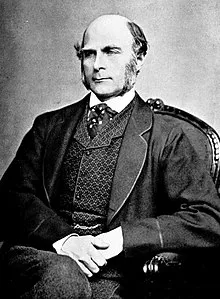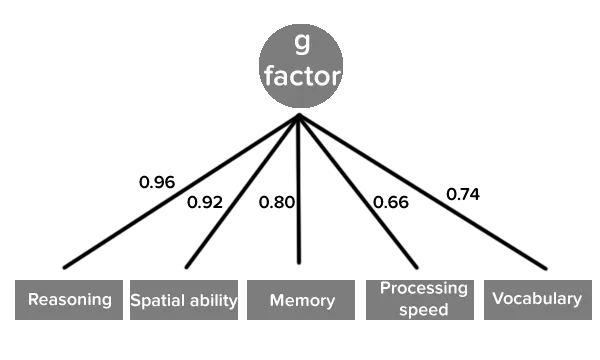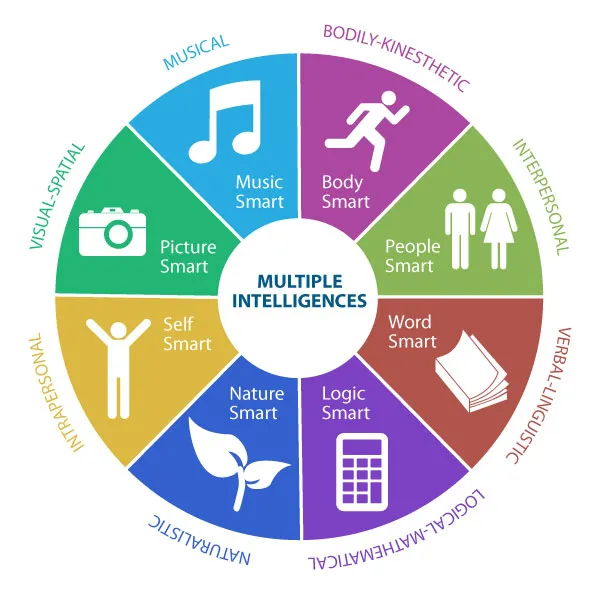Intelligence - a part of the mental world which evokes a lot of controversy both within and outside the scientific community. Disputes about its nature have been going on for centuries. A lot of myths have grown around intelligence, and one can find many heated debates about this phenomenon on the Internet. In these discussions, controversial theses are often raised with a lot of confidence. But from the scientific point of view, what is intelligence? In today's Insight we will try to have a look at that topic.

Troublesome attempts of defining intelligence
Research on intelligence has been underway for over a century, but to this day researchers do not fully agree about its nature, or even its definition. Scientific definitions of intelligence can be classified into as many as 27 separate classes (!). Does this mean that there is no such thing as intelligence and that it is just an empty construct made up by psychologists? Absolutely not. What this means is that it is an extremely complex and difficult phenomenon to study and conceptualise to. In this article I am only going to outline scientific problems around intelligence - it's impossible to dive into it in such a short form. Let's start from the beginning...
Historical overview

sir Francis Galton - the precursor of intelligence research
image source
A few years later, a concept of intelligence closer to contemporary definitions was proposed by Alfred Binet. His proposal, similarly to many present theories, was based on defining intelligence through cognitive-processual components. According to Binet, the functioning of the intellect is based on direction, adaptation, and criticism. Direction is a proper planning of mental actions required to solve a problem, it can resemble something like creating an instruction in your mind and following it. Adaptation is about choosing the right strategy to solve the problem and skilfully using alternative approaches when the ones originally selected do not work. Criticism, on the other hand, is simply a critical look at one's own way of thinking, which allows one to detect and correct errors. Binet researched people with various types of intellectual disabilities, and in his opinion such people had deficits in the direction, adaptation, and criticism of their thinking.
However, Charlse Spearman's concept proved to be the most influential and still in valid in modern times in one form or another. He defined intelligence as not fully defined mental energy, which is divided between different mental activities. These require it to varying degrees. Intelligent people have more of this mental energy and are therefore able to do more complicated tasks. Spearman distinguished three basic cognitive activities, for which mental energy (intelligence) can be "utilized" and these were: acquiring experience, that is, transforming what we experience into content and meaning and associating it with the knowledge we gained earlier, reasoning on relations, that is, perceiving abstract connections between different elements and classes and reasoning on interdependences, that is, perceiving correlations, and therefore consequences of events or co-existence of various elements (e.g. when we see an element, due to the fact that earlier we saw another element and its relation - the concept of "evil" can be deduced from the concept of "good" and its abstract opposite).
Contemporary definition of intelligence
According to Edward Nęcka, the most recent contemporary (but still only operative) definition of intelligence is "the ability or group of abilities to adapt to circumstances by recognizing abstract relations, using previous experiences and effective control over one's own cognitive processes". As we can see, this is not too far from what Spearman proposed 100 years ago. Today, in addition to adaptation and learning from previous experiences, special emphasis is placed on the metacognitive nature of intelligence - a person with high intelligence is able to manage the resources of his mind in a much more intentional and effective way and knows better how he processes information than most of other people.
The problems, however, start at the point where we want to clarify exactly what "ability" means in this context. Is it the potential of the individual's ability to adapt to the environment (if all optimal conditions are met)? Or are these actual human abilities when the optimal conditions are met? Or maybe we should define intelligence as only the abilities manifested in performing specific test tasks and not try to abstract it from non-testing behaviours, then obtaining empirical accuracy of definitions?
These disputes persist to this day. Adopting one definition or another entails different theoretical and practical consequences. Most researchers agree that intelligence tests indirectly measure "something more" than simply the ability to solve a test, and that would be the very essence of this "mythical" intelligence.
The structure of intelligence - one or more factors?
By statistically analyzing the results of various tests and tasks concerning different abilities, Spearman found one factor that correlated with the high results of all these tasks, regardless of whether they concerned maths, the use of vocabulary, spatial transformations or social situations. This initiated a dispute as to whether this factor, named by himthe factor "g" (general) is a real, objective thing or attribute that characterizes all people to varying degrees, or whether it is only a statistical artifact (something that does not exist in real life and is revealed only in statistics). Spearman took the first position and in his opinion the factor "g", that is simply general intelligence, affects all special intellectual abilities (so-called factors "s", from specific).

The numbers coming from the factor "g" to the individual mental abilities such as reasoning, spatial ability, memory, vocabulary, etc. determine the strength of the correlation. The closer the number is to 1, the stronger the correlation is. As you can see, the "g" factor correlates very strongly with all the presented abilities.
It initiated two trends of intelligence research and theorizing, and that debate is still ongoing, whether general intelligence exists, which would be a single factor above all other specific factors, or whether the structure of intelligence is composed of several/a dozen or so non-reducible equivalent factors. An example of the latter concept is Gardner's theory of multiple intelligence, which was developed in opposition to the Spearman's psychometric model and its successors and distinguishes as many as seven independent types of intelligence - logical-mathematical, verbal-linguistic, naturalistic, musical-rhythmic, visual-spatial, bodily-kinesthetic, interpersonal and intrapersonal intelligence. People differ in the degree of these seven types of intelligence and so someone terrible in mathematics can cope well in social or musical situations - which is shown by the high adaptability in these areas, right? Unfortunately, Gardner's theory proved to have a low empirical foundation. It turns out that the observed differences in the performance of tasks from the seven areas distinguished by Gardner can be explained by different effects of special abilities ("s" factor), however, the influence of the superior factor of general intelligence still remains.

Gardner's Multiple Intelligence
image source
Quite a popular addition to Spearman's theory were the concepts of fluid intelligence and crystallised intelligence introduced by Raymond Cattell, who recognized the factor "g", but believed that it should be broken down into the two components. Liquid intelligence would have a strictly biological basis and would be an innate predisposition to solve abstract tasks regardless of the experience gained. It is quite variable with age - as the body and brain develop, it grows to its peak in adulthood, but it degrades in old age due to the poorer functioning of the nervous system. At the same time, we do not have much influence on its shape. However, crystallised intelligence is closely related to experience and knowledge acquired and its use, and can compensate for possible deficiencies in liquid intelligence. The high correlation of these two kinds of intelligences, according to some, indicates that there is a superior factor "g", and that crystallized and liquid intelligence are as if a second layer of intelligence, not a basic component of it.

Example of items from the Raven's Progressive Matrices, which are intended to examine non-verbal liquid intelligence.
iamge source
Intelligence Quotient
What I have described so far concerns purely theoretical work on the intelligence of humans and its nature. However, there has always been a need to use knowledge about the intellect in a practical way, for example, for diagnostic or recruitment purposes. It is here that the quotient of intelligence enters the game. It should be stressed, however, that this is something different from intelligence per se. IQ is a very general indicator and a type of large, synthetic averaging of "real" potential intelligence with the results of performing various kinds of verbal, logical or perceptual tasks and serves exclusively for practical purposes.
The concept of intelligence quotient was introduced in 1921 by Wilhelm Stern. IQ result originally described the so-called "mental age" of children, thus determining the extent to which the mind of a child exceeds or deviates from the typical mind of children at that age. If, for example, a five-year-old child successfully completes tasks that most five-year-olds are unable to perform, but six-year-olds are already coping with them perfectly, his or her mental age can conventionally be described as the mind of a six-year-old. The IQ result for children is in this case obtained by dividing the child's "mental age" by the real age, and multiplying by 100 - in this case it would be 6/5 x 100, which gives us a result of 120.

The distribution of intelligence quotient in the population. As we can see, as many as 70% of the population shows IQ in the range of 86 to 115 points.
image source
This is just the tip of the iceberg, but these theories are a good starting point for exploring the subject. As we can see, the topic is not yet finalised in contemporary literature, although the prevailing view is that there is a kind of superior general intelligence to which various types of component intelligences or specific skills are subject. Empirical evidence shows this to be the case. The issue of lower hierarchical levels is still being explored. It should also be remembered that IQ is not strictly the same as intelligence as such. It is a very useful construction used to estimate intelligence, but it is influenced by many factors depending on the tool used, environment of testing, a person carrying out the research, his/her culture, etc.
Epilogue
Finally, I would like to say that this is the last entry in my Insight series. It's been 9 months since the first entry! Big THANK YOU to all the readers and #steemstem community for supporting these posts! Does this mean the end of psychology on my blog? Not at all! I am simply going to use a different, more flexible form and perhaps create a new format. I hope you will enjoy them!
Literature
Gardner, H. E. (2008). Multiple intelligences: New horizons in theory and practice. Basic books.
Nęcka, E. (2005). Inteligencja: geneza, struktura, funkcje. Gdańskie Wydawnictwo Psychologiczne.
Sternberg, R. J., & Detterman, D. K. (1979). Human intelligence: Perspectives on its theory and measurement. Praeger Pub Text.
Sternberg, R. J. (Ed.). (1982). Handbook of human intelligence. CUP Archive.
Strelau, J., & Zawadzki, B. (2006). Psychologia różnic indywidualnych. Scholar.
Spearman, C. (1904). " General Intelligence," objectively determined and measured. The American Journal of Psychology, 15(2), 201-292.
Wechsler, D. (2008). Wechsler Adult Intelligence Scale–Fourth Edition (WAIS–IV). San Antonio, TX: The Psychological Corporation.
Previous entries in the Insight series:

SteemSTEM is a community driven project which seeks to promote well written/informative Science Technology Engineering and Mathematics postings on Steemit. More information can be found on the @steemstem blog. For discussions about science related topics or about the SteemSTEM project join us on steemSTEM Discord server.